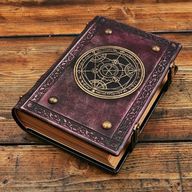This passage can be found about halfway through the tome, and is noticeable as the style of handwriting changes abruptly.
I feel different now, stronger, better. After the explosion a great firedamp blew through St. Kinga's Chapel where I was attending to the wounded (and of course gathering materials for my experiments). A dark wind filled with the smell of rot and brimstone. And when the wind passed, I was changed.
Even now the weak flesh sloughs off my bones, my heart no longer beats, my lungs need to no air, and yet I live and think, and am aware. My mind works better then before, my brain racing, new possibilities presenting themselves to me fevered imaginings. Inside my mind I hear whispers, great ideas, promising lines of research. My body seems stronger as well, bones more enduring then weak flesh, they have the strength of iron, of steel! Most of the other lesser beings in the Cathedral were also changed in a similar manner, though they seem of lesser strength them myself.
This is a gift, a great gift. So much opportunity for study, for experimentation. A gift I will make good use of.
